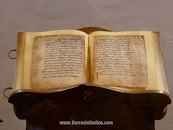
Por razones laborales hace algunos años tuve una de las más bellas experiencias de mi vida, aunque esta llegó como se dice en buen cubano “de carambola”. Por motivos de un programa de capacitación del Ministerio de Educación llegué a Madrid. El plan de formación profesional, incluía un tiempo de pasantía en una de las comunidades autónomas de España. No sé si fue el destino o la casualidad, la pasantía ese año fue en La Rioja, muy famosa en Cuba por la calidad de sus vinos.
A pesar de la apretada proyección de los estudios, siempre había una visita a los diferentes municipios llenos de historia de la comunidad autónoma, así conocí su excelente universidad e institutos técnicos de segunda enseñanza, sus plantaciones de la vid, el proceso en las grandes bodegas y la cata del vino; de Alfaro con su Catedral de las Cigüeñas; del Camino de Santiago con sus peregrinos, entre otras vivencias, solo conocidas por otras vías, etc.
For work reasons, a few years ago I had one of the most beautiful experiences of my life, although it came as they say in good Cuban "de carambola". For reasons of a training program of the Ministry of Education I arrived in Madrid. The professional training plan included an internship in one of the autonomous communities of Spain. I do not know if it was fate or chance, the internship that year was in La Rioja, very famous in Cuba for the quality of its wines.
Despite the tight schedule of studies, there was always a visit to the different municipalities full of history of the autonomous community, so I knew its excellent university and technical institutes of secondary education, its plantations of the vine, the process in large wineries and wine tasting; Alfaro with its Cathedral of the Storks; the Camino de Santiago with its pilgrims, among other experiences, only known by other ways, etc.
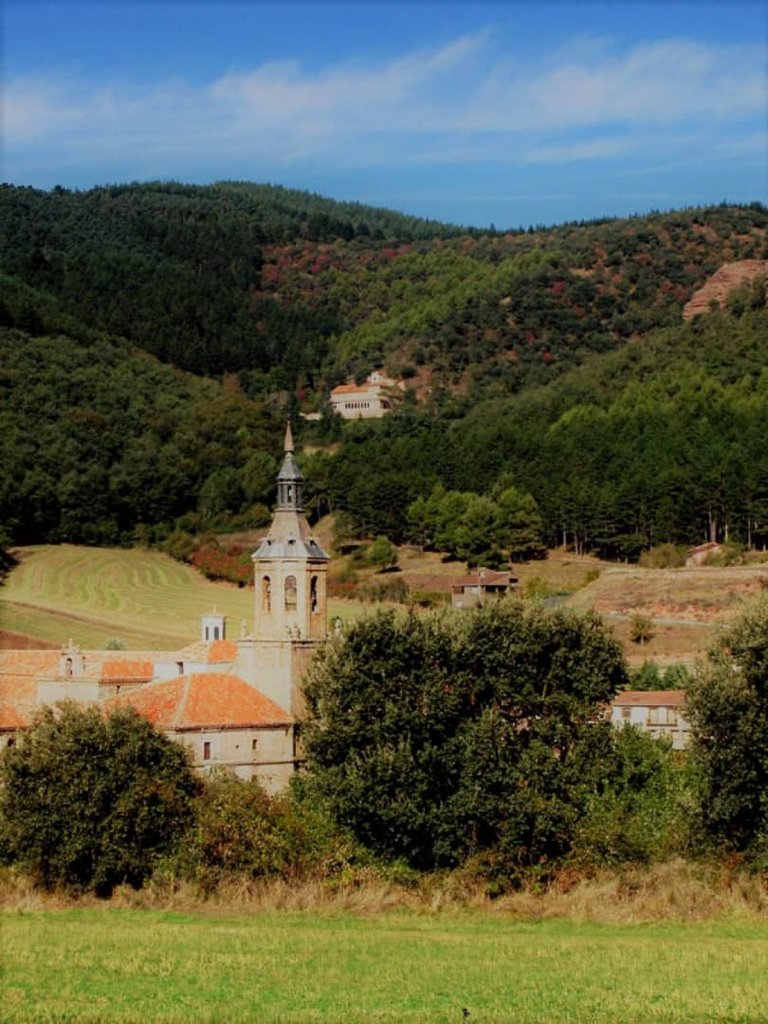
Y en eso andaba cuando surgió una visita que cambió por completo el orden de mis preferencias de todo el tiempo en España: la visita al municipio de “San Millán de la Cogolla”, considerado como “la cuna de la lengua castellana”. El plato fuerte y mayor tiempo de la visita se concentró en los monasterios de “Suso”, que significa arriba, y “Yuso”, que significa abajo en castellano antiguo; fundamentalmente en el segundo pues el primero estaba en reparaciones. Ambos son verdaderas joyas de la arquitectura que además de custodiar los restos mortales de San Millán (Yuso) en una urna de oro, marfil y pedrería, fungen desde el siglo XI, como centros de difusión cultural donde los monjes del medioevo escribieron los primeros textos en castellano: Las Glosas Emilianenses.
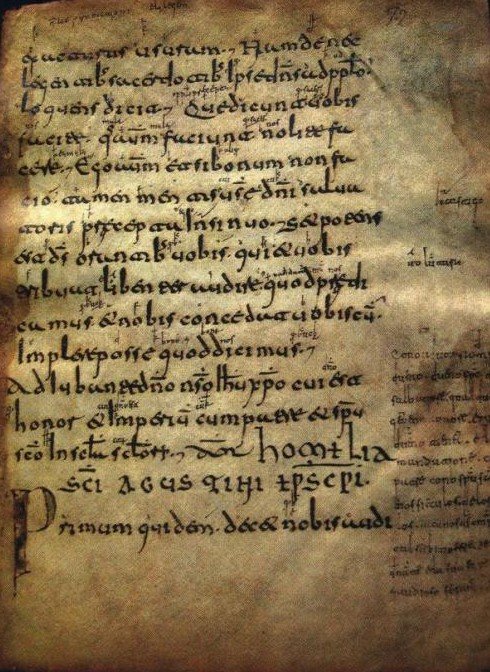
En estos manuscritos, escritos en latín dada la influencia de la cultura romana, que se custodian en el monasterio de Yuso, aparecen notas grabadas en los márgenes con el propósito de descifrar, explicar o aclarar en el lenguaje común o popular de ese tiempo (romance), determinadas palabras escritas que resultaban muy complejas y difíciles de entender para sus lectores. Lo primero que descubrí, para mi asombro, fue que la práctica mía de llenar de notas las páginas de los libros que leo, para explicar las palabras complejas, es tan antigua como la lectura misma y yo la había aprendido como el Burro de Tomás de Iriarte, es decir, por casualidad.
And that's what I was doing when a visit came up that completely changed the order of my preferences during my time in Spain: the visit to the municipality of "San Millán de la Cogolla", considered as "the cradle of the Castilian language". The main course and the longest part of the visit was concentrated in the monasteries of "Suso", which means up, and "Yuso", which means down in old Castilian; mainly in the second one because the first one was under repair. Both are true jewels of architecture that besides guarding the mortal remains of San Millán (Yuso) in an urn of gold, ivory and precious stones, have served since the 11th century as centers of cultural diffusion where the monks of the Middle Ages wrote the first texts in Castilian: The Glosas Emilianenses.
In these manuscripts, written in Latin due to the influence of Roman culture, which are kept in the monastery of Yuso, there are notes engraved in the margins with the purpose of deciphering, explaining or clarifying in the common or popular language of that time (Romance), certain written words that were very complex and difficult to understand for their readers. The first thing I discovered, to my astonishment, was that my practice of filling the pages of the books I read with notes to explain complex words is as old as reading itself and I had learned it like Tomás de Iriarte's Donkey, that is, by chance.

Por otra parte, me impresionó el tamaño de los libros, con cubierta de madera y más de 70 cm de alto, y el cuidado y cariño con que aquellos monjes bibliotecarios los manipulan de modo que, a través de su lectura los visitantes den fe de su verdad como dueños del origen de nuestra lengua. No son pocos, además, las reproducciones en bronce de las Glosas Emilianenses que adornan cada pared del monasterio de Yuso, como para que no quepa dudas del dominio de la génesis de nuestra lengua.
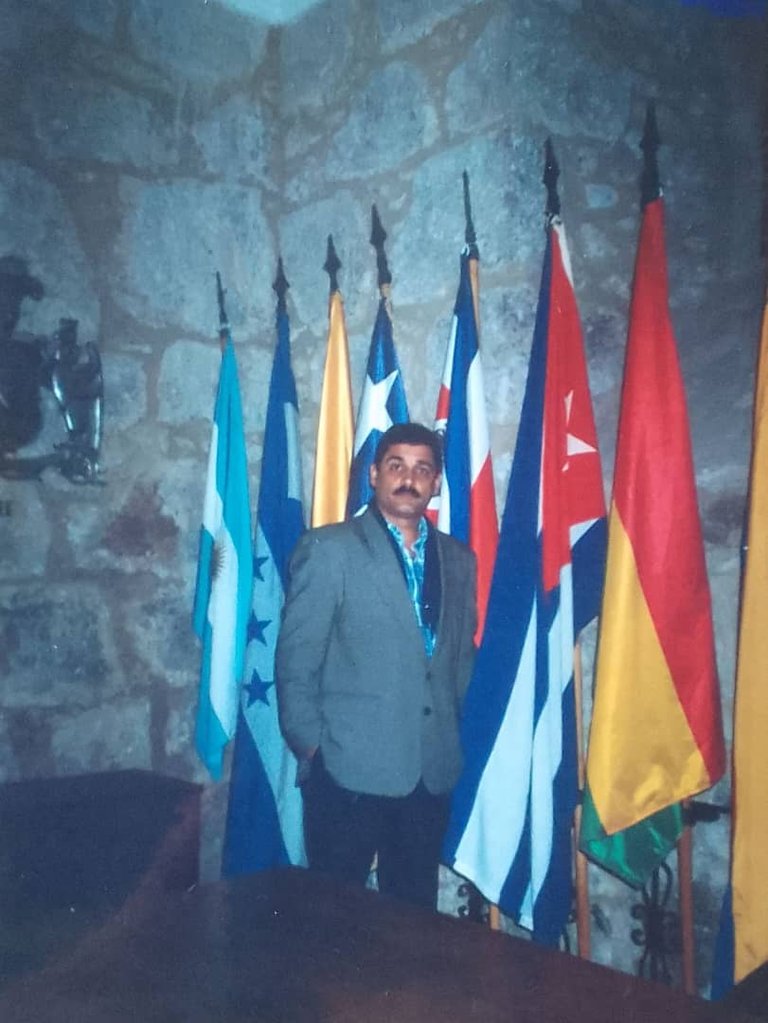
Además,para no quedarse con el patrimonio de ese gran hecho cultural del habla castellana todo, como diría Martí, “se condensa, como la montaña en la cúspide” en el Aula de la Lengua. En sus paredes cada país de habla hispana tiene su espacio, adornado por el escudo correspondiente; allí está el nuestro erguido, fundido en bronce; bella imagen para traer al recuerdo nuestra tierra, después de un tiempo alejado de ella. Más al fondo o mejor, protegiendo el escenario están todas las banderas; a mí me pareció que la nuestra sobresalía.
Preside el aula un Padre, la máxima autoridad del monasterio. Su cultura es amplia, su dominio de la lengua y de su historia sobresale. Con humildad conversó con cada uno de nosotros, pero escuchaba más; parecía interesarle todo los que le decíamos y al final pidió una foto colectiva.
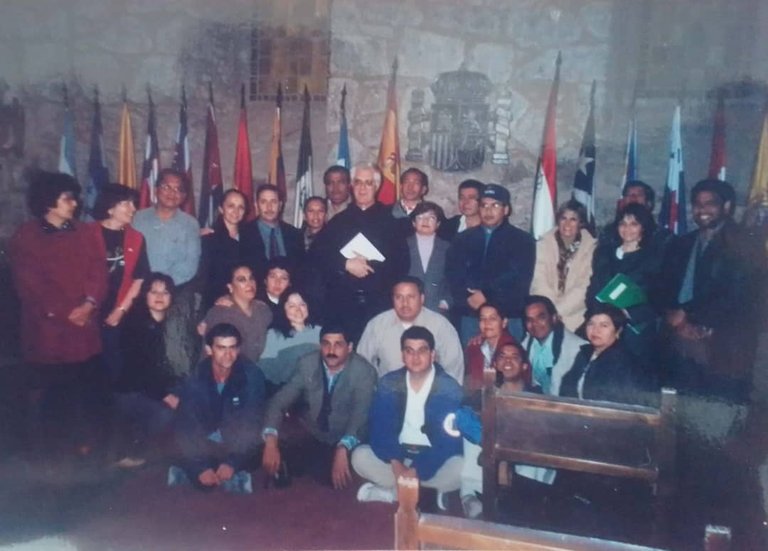
On the other hand, I was impressed by the size of the books, with wooden cover and more than 70 cm high, and the care and affection with which those librarian monks handle them so that, through their reading, visitors can attest to their truth as owners of the origin of our language. There are also many bronze reproductions of the Glosas Emilianenses that adorn every wall of the monastery of Yuso, so that there is no doubt about the mastery of the genesis of our language.
Furthermore, so as not to be left with the heritage of this great cultural fact of the Spanish-speaking world, everything, as Martí would say, "is condensed, like the mountain at the top" in the Aula de la Lengua. On its walls, each Spanish-speaking country has its own space, adorned by the corresponding coat of arms; there is ours standing erect, cast in bronze; a beautiful image to bring back the memory of our land, after a time away from it. Further in the background or better, protecting the stage are all the flags; it seemed to me that ours stood out.
A Father, the highest authority of the monastery, presides over the classroom. His culture is ample, his command of the language and its history is outstanding.
With humility he conversed with each one of us, but he listened more; he seemed to be interested in everything we told him and at the end he asked for a collective photo.
Salí del monasterio con un deseo inmenso de saber más sobre nuestra lengua; pensaba en cuántas profesoras y profesores de Lengua Materna no tenían la posibilidad de vivir esa experiencia. Sentí que esa dicha no me pertenecía. Tomé muchas fotos ese día. Tiempo después, de regreso a Madrid, en el estudio de un chino en la calle Carretas, cerca del Hostal “la Castellana” de Doña Marujita dónde vivía, reproduje todas las que mi respaldo económico me permitió. El chino me entendió como pudo cuando le expliqué por qué necesitaba varias reproducciones. Dos días antes de regresar a Cuba, recogiendo otros encargos en el propio estudio, el chinito me entregó un sobre y me dijo en su español – tome, un “legalo”.
En el sobre había aproximadamente 10 reproducciones. No me queda ninguna, todas las entregué con pena a las profesoras de español que conocía. He tenido que visitar a la profe Carolina Mora, dueña de algunas de ellas, para escanear las que necesitaba para este post. Otras, fundamentalmente las que pertenecen a los monasterios y los libros en sus anaqueles, las tomé de la guía turística, aun en mi poder, que nos entregaron en el Ayuntamiento de Logroño, la capital de La Rioja, cuando nos informaron de la visita.
I left the monastery with an immense desire to know more about our language; I thought about how many teachers of Mother Tongue did not have the opportunity to live that experience. I felt that this joy did not belong to me. I took many pictures that day. Some time later, back in Madrid, in the studio of a Chinese man on Carretas Street, near Doña Marujita's Hostal "la Castellana" where I lived, I reproduced as many as my financial support allowed me. The Chinese man understood me as well as he could when I explained to him why I needed several reproductions. Two days before returning to Cuba, picking up other orders at the studio itself, the little Chinese man handed me an envelope and told me in his Spanish - here, a "legalo".
In the envelope were approximately 10 reproductions. I don't have any left, I gave them all with regret to the Spanish teachers I knew. I had to visit Prof. Carolina Mora, owner of some of them, to scan the ones I needed for this post. Others, mainly those pertaining to the monasteries and the books on their shelves, I took from the tourist guide, still in my possession, which we were given at the City Hall of Logroño, the capital of La Rioja, when we were informed of the visit.
Texto traducido al inglés por DeepLTranslate.
Text translated into English by DeepLTranslate.
Muy interesante lo que nos cuentas, haber estado en el origen de nuestra lengua es un verdadero privilegio.
Efectivamente, creo que todos debemos vivir esa experiencia. Gracias por tu comentario.
Una frase más para mi arsenal. Ya hice mi investigación.
He sonreído al leerle porque siento alegría cuando alguien cuenta con tanto cariño y orgullo sus recuerdos.
Gracias por compartirlos y traer sus saberes a la Blockchain.
Hola @nanixxx, gracias por tus lindas y cariñosas palabras. Miles de disculpas por cualquier falta involuntaria en este nuevo y fascinante aprendizaje. Merecer el aprecio de personas tan conocedoras del oficio, mas que orgullo es un compromiso con la mejora permanente. Gracias
Aprender dando pasos, es lo que hacemos siempre, durante toda nuestra vida. Así que no tiene por qué disculparse. Lo único que recomiendo en este maravilloso post es que señale las fuentes de las imágenes. Esto es un tema importante en Hive.
Un saludo y buenas noches,
;)
Experiencia de lujo, estas son de las que son únicas en la vida, que experiencia ir al viejo continente a conocer los orígenes.
Saludos y cálido abrazo🙌🙌🙌
Congratulations @bertico! You have completed the following achievement on the Hive blockchain And have been rewarded with New badge(s)
Your next target is to reach 1500 upvotes.
You can view your badges on your board and compare yourself to others in the Ranking
If you no longer want to receive notifications, reply to this comment with the word
STOPCheck out our last posts:
Qué gran experiencia tener de cerca el nacimiento de tan bello idioma! Felicidades por tu trabajo! Saludos 🤝